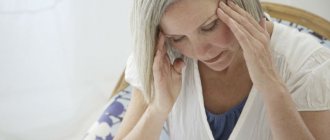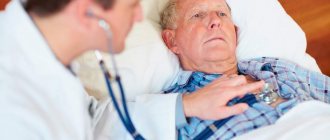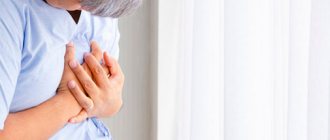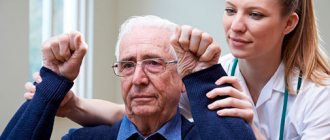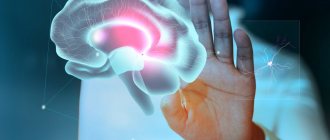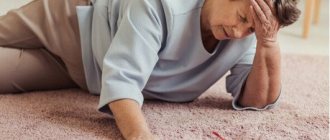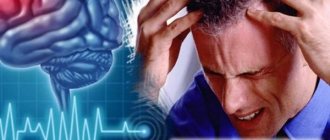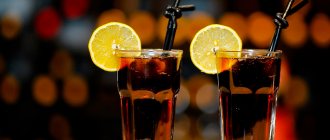Introduction
Acupuncture has been recommended by the World Health Organization (WHO) as an alternative and complementary treatment for stroke patients and as a way to improve rehabilitation [1].
The frequency of use of acupuncture for stroke is increasing every year both in the countries that are the founders of traditional Chinese medicine (TCM), and in Europe and North America [2]. The mechanism underlying the therapeutic effect remains unknown. The influence of acupuncture on the restoration of other impaired functions, except motor, and its role in the treatment of stroke complications and secondary prevention have not been sufficiently studied. The purpose of the study is to conduct an analysis of the scientific literature, on the basis of which to summarize the current known mechanisms of acupuncture and electroacupuncture, to summarize data on the effectiveness and specificity of the method in the prevention and treatment of stroke, the prevention of complications of the disease, the rehabilitation of post-stroke patients, to detail the most commonly used acupuncture points in acute brain disorders blood circulation
The search was performed without restrictions on the language of publication. Full-text and abstract databases were used as literature sources. The source search procedure included working in PubMed. The keywords for the search were words in English: “stroke and acupuncture”, “stroke and electroacupuncture”, “stroke and treatment and acupuncture”, “stroke and prevention and acupuncture”, “stroke and spasticity and acupuncture”, “stroke and dysphagia and acupuncture”, “stroke and cognitive impairment and acupuncture”. A filter was applied to search for articles published between 2013 and the present.
The mechanism of action of acupuncture for stroke
The mechanisms of action of acupuncture have been most studied in ischemic stroke. There is very little fundamental research into the effect of acupuncture in hemorrhagic stroke.
Taking into account the published L. Chavez et al. [3] in 2017, a meta-analysis of basic research and other data, the following main components of the mechanism of action of acupuncture in stroke can be identified:
1) stimulation of neurogenesis and cell proliferation in the central nervous system (CNS);
2) regulation of cerebral blood flow in the ischemic area;
3) anti-apoptosis in the ischemic zone;
4) regulation of the exchange of neurotransmitters, mediators of inflammation and oxidative stress;
5) improving the function of neuronal synapses, stimulating long-term potentiation (LTP);
6) stimulation of neuroplasticity;
7) decreased permeability of the blood-brain barrier.
Cell proliferation in the CNS
Acupuncture triggers 2 different mechanisms.
Firstly, neurogenesis is stimulated in neurogenic areas of the brain (subventricular zone of the lateral ventricle, dentate gyrus of the hippocampus). Electroacupuncture during cerebral ischemia in mice improved stem cell division by increasing the expression of GSK-3β/PP2A proteins, which control protein synthesis, proliferation, differentiation and apoptosis of cells; increased the content of brain-derived neurotrophic factor (BDNF) and vascular endothelial growth factor (VEGF) [4], promoted the expression of retinoic acid, which enhances neurogenesis in the subventricular zone and hippocampus [5].
Secondly, acupuncture caused cell proliferation in the ischemic focus and adjacent zones (ischemic penumbra zone). After ischemia caused by middle cerebral artery occlusion and subsequent reperfusion in laboratory mice, electroacupuncture activated a cascade of Wnt and β-catenin signaling proteins, stimulating the proliferation of reactive astrocytes and neural progenitor cells [6]. Electroacupuncture increased stem cell activity [7], brain cell proliferation by stimulating Extracellular signal-Regulated Kinase (ERK1/2) and cyclin expression [8, 9]. In the experiment, electroacupuncture promoted the proliferation of glial astrocytes in the peri-infarct cortex, striatum, ischemic tissue and neurogenic areas by increasing the expression of BDNF [4, 10]. This is undoubtedly important because BDNF is one of the most potent growth factors associated with recovery from stroke.
Regulation of cerebral blood flow in the ischemic area
Endothelial damage during stroke contributes to impaired nitric oxide production and increased endothelin-1 production, leading to vasospasm, which increases ischemia. The vasoactive modulating effect of electroacupuncture in mice at the points of the posteromedian meridian GV14 (note: hereinafter the names of acupuncture points are indicated according to the International Acupuncture Nomenclature, see Tables 1 and 2 ), GV20, GV26, through cholinergic activation and release of nitric oxide, increased perfusion on the affected side [eleven]. Electroacupuncture in laboratory rats decreased the expression of angiotensin II and its receptor type 1 (AT1R), promoting vasodilation and increasing cerebral blood flow [12]. It is of interest to study the effect of acupuncture on cerebral blood flow during ischemia in clinical studies that have already begun (protocols have been published, results are awaited).
Table 1. Designations of classical channels according to the International Acupuncture Nomenclature
Table 2. Designations of extra-meridian points according to the International Acupuncture Nomenclature
Antiapoptosis
Inhibition of apoptosis may reduce ischemic injury. It was shown that electroacupuncture during cerebral ischemia in rats at points GV20, GV26, CV6 increased the level of anti-apoptotic factors Akt, Bcl-2, Bcl-xL and cIAP 1/2, inhibited apoptotic mediators DR5 and the caspase family - caspase 3, 8 and 9 [ 13]. Electroacupuncture stimulation of points ST36, LI4, LI11, GV14, GV16, GV20, GV24, GV26, CV24, LU5, SP6 in rats with the ischemia-reperfusion model activated cascades of anti-apoptotic protein kinases (Bcl-2/Bax, PI3K/Akt, ERK1 /2, mitogen-activated protein kinase p38 MAPK) [14-17], suppressed neurotoxicity and inhibited the activation of the nuclear factor kappa-bi (nuclear factor - NF-kB) [18, 19]. Important factors in apoptosis are activation of large conductance calcium-activated potassium channels (BKCa) and expression of messenger ribonucleic acid (mRNA) [20]. Electroacupuncture at the GV26 point suppressed the expression of BKCa and mRNA at the site of injury, reduced neuronal apoptosis in rats (ischemia-reperfusion model), and improved motor function [21].
Regulation of the exchange of neurotransmitters, inflammatory mediators and oxidative stress
Ischemic damage is accompanied by an imbalance of excitatory and inhibitory neurotransmitters. Acupuncture can normalize neurotransmitter metabolism. It was shown that stimulation of extrameridian acupuncture points of the back EX-B2 on 2 sides along the spine in rats with cerebral ischemia promoted an increase in the expression of GABA-Aγ2 and GABA-BR2 receptors in the striatum and spinal cord, as well as the level of β-endorphins, and reduced the volume of infarction [ 22].
The inflammatory response during the development of cerebral ischemia is mainly mediated through the innate immune response by microglial cells, astrocytes, macrophages, cytokines: interleukins (IL-1, IL-6 and IL-10) and tumor necrosis factor-α (TNF-α). The inflammatory response induced gene expression and activation of transcription factors that regulate the ischemic cascade [23]. In models of ischemia-reperfusion in rats, it was revealed that electroacupuncture at points ST36, GV20, LI11 has an anti-inflammatory effect, inhibiting the local release of cytokines, including TNF-α, inhibits heat shock proteins (HSP70), and inhibits cell turnover -like receptor 4 (Toll-like receptor 4). This inhibits the activation of NF-kB and reduces the expression of immune response genes [24, 25]. Evidence of the anti-inflammatory effect of acupuncture in ischemia is a decrease in the level of adrenocorticotropic hormone and HSP70 in the blood and brain tissue after electroacupuncture at the GV20 point [26]. Thus, electroacupuncture can reduce inflammation in ischemic stroke.
The antioxidant effects of acupuncture were observed in rats with multi-infarct injury modeled by occlusion of two cerebral arteries. As a result of acupuncture at points CV17, CV12, CV6, ST36, SP10, GV20, inhibition of oxidative stress mediated by NAPDH oxidase was observed [27]. Laser puncture at the GV20 point in rats with middle cerebral artery occlusion contributed to a decrease in the level of malondialdehyde, an increase in the activity of glutathione peroxidase, catalase and superoxide dismutase in mitochondria, and led to a decrease in the volume of the ischemic focus [28].
Stimulation of long-term potentiation (LTP) of neuronal synapses
Animal models have shown that cerebral ischemia affects the CA-1 region of the hippocampus, which is responsible for learning and memory formation. The cellular model of synaptic transmission in the hippocampus is the phenomenon of LTP, realized through intracellular signaling cascades. Cyclic adenosine monophosphate cAMP (cAMP) activates protein kinases and CREB, a cAMP response element-binding protein (CREB-protein), which plays an important role in memory formation [29]. A two-week course of acupuncture at ST36 points in rats with multi-infarct injury activated the cAMP/PKA/CREB cascade, promoted the modulation of LTP in CA-1 and improved cognitive function [30].
Another cascade that activates CREB is the microRNA (mRNA) pathway and LIM kinase 1 (LIMK1), a key enzyme in long-term memory. LIMK1 regulates actin remodeling, causing dendritic restructuring, axon modification, ensures synaptic plasticity, and promotes CREB protein synthesis. Electroacupuncture at points GV20 and GV24 facilitated the expression of mRNA and increased the content of LIMK1 in the hippocampal CA-1 region [31]. Electroacupuncture of GV20 and GV24 points in rats (an ischemia-reperfusion model) stimulated the CREB activation pathway through the calmodulin (CaM) and calmodulin-dependent kinase IV (CaMKIV) system, promoting improved cognitive behavior and a reduction in infarct volume on histological examination [32].
Stimulation of neuroplasticity
Neuroplasticity consists in the functional compensation of intact neurons, which determines the restoration of impaired functions after a stroke. Studies using functional magnetic resonance imaging (MRI) have shown that brain plasticity after stroke is manifested in changes in cortical thickness, gray matter volume, white matter conducting fibers, and activation of functional connections [33, 34]. Functional connections of the brain formed neural networks that were significant both during load and at rest (“resting networks”). According to functional MRI of the brain, it was found that acupuncture at the GB34 point in patients with ischemic stroke and hemiplegia improves the functioning of cognitive, motor and perceptual resting networks [35], promotes neuroplasticity and functional reorganization of neurons.
Reduced permeability of the blood-brain barrier (BBB)
Increased permeability of the BBB is one of the reasons for the development of complications of stroke (hemorrhagic transformation of the ischemic focus, enlargement of the hematoma during hemorrhagic stroke, cerebral edema, dislocation syndrome). Factors that increase BBB permeability are the microvascular endothelial cell membrane protein caveolin-1 and matrix metalloproteinases 2 and 9 [36]. Electroacupuncture at point GV20 in rats with intracerebral hemorrhage contributed to a decrease in the passage of Evans Blue dye into the brain tissue 30 minutes after intravenous administration, according to spectrofluorimetry, a decrease in the expression of caveolin-1 and matrix metalloproteinases 2 and 9, which indicates a decrease in the permeability of the BBB [37] . This mechanism holds promise for research into the role of acupuncture in preventing complications of severe stroke.
Acupuncture in restoring impaired functions in stroke
Randomized controlled trials (RCTs) are used to demonstrate the therapeutic effects of acupuncture. CONSORT (CONsolidated Standards of Reporting Trials, CONSORT) and STRICTA (STandards for Reporting Interventions in Controlled Trials of Acupuncture, STRICTA) standards are used to reduce bias and improve methodological quality. , developed in 2001 and revised in 2010 [38]. In this regard, it is a common practice to publish protocols of RCTs, planned or recently initiated, without reporting the results.
We present data from completed studies.
Motor disorders. One of the priority goals of medical rehabilitation of patients after a stroke is to improve motor skills and reduce spasticity. Movement disorders impair mobility, limit daily activities, reduce the chances of returning to professional activities and reduce the patient’s quality of life. The results of a large number of studies on the restoration of motor deficits using acupuncture have been published.
Data from a 2021 meta-analysis demonstrate the effectiveness of acupuncture in achieving functional balance, increasing muscle strength, and improving overall well-being in stroke patients [39]. A meta-analysis of 5 RCTs (2015) showed that acupuncture significantly reduces spasticity after stroke (according to the Fugl-Meyer assessment of physical performance - FMA) [40]. Different acupuncture points are used. Thus, acupuncture GV20, GB20, GB39, LI11, LI4, ST36, SP6 in combination with antiplatelet agents led to better restoration of tone on the FMA scale in comparison with antiplatelet therapy alone. However, the dynamics of restoration of the white matter microstructure, according to MRI diffusion data, did not depend on the use of acupuncture [41].
We describe a case of successful 3-month acupuncture treatment of paresis and spasticity in the arm of a patient after an ischemic stroke. Acupuncture at points GV20, PC7, SI3, EX-UE9 was combined with kinesiotherapy using the CIMT (Constraint-induced movement therapy) method. A sustained improvement was achieved in the Modified Ashworth Scale (MAS), FMA, Action Research Arm Test (ARAT), and Motor Activity Log (MAL) [42].
There are reports of proven effectiveness of scalp therapy in the treatment of movement disorders after stroke. The therapeutic effect can be either delayed or immediate. A single acupuncture in the motor area of the scalp on both sides for 30 minutes in patients with ischemic stroke and hemiplegia helps to immediately improve motor skills in the distal upper limb and proximal lower limb (according to the FMA scale), normalizes the tone of the biceps brachii and rectus femoris muscles , according to electromyography data [43].
In 2021, the results of a multicenter RCT conducted in China were published, which included 241 patients with hemiplegia due to ischemic stroke. Scalp therapy was used in the motor and sensory areas, acupuncture: for the upper extremities - points LI10, TE5, LI4, electroacupuncture LI15 and LI11; for the lower extremities - ST34, GB34, ST40, ST41, LR3, electroacupuncture SP6 and ST36. As a result, the acupuncture group showed more pronounced changes in neurological status (according to the NIHSS scale) and better recovery of lower limb function (according to the FMA scale) [44].
Recovery of motor deficits correlates with improvement in the functional state of the cerebral cortex. Thus, acupuncture at points GV20, GB20, GB39, LI11, LI4, ST36, SP6 in patients with stroke promotes a more pronounced restoration of resting motor networks (according to functional MRI of the brain) and a decrease in neurological deficit (according to the Neurological Deficit Score - NDS) than in patients without acupuncture [45].
Data from studies of the dynamics of motor function in stroke patients using acupuncture are presented in Table. 3 . It is obvious that the clinical effect is based on the above-described cellular and biochemical mechanisms of action of acupuncture.
Table 3. Results of studies of the effectiveness of acupuncture in restoring motor function in patients with stroke
Dysphagia. The positive effect of acupuncture on swallowing function after stroke is confirmed by meta-analysis data. Thus, published in 2021 by Q. Ye et al. [46] a systematic review of 71 RCTs (6010 patients, 2991 acupuncture group, 3019 control group) demonstrated that the therapeutic effectiveness of acupuncture (as monotherapy or in combination with medications and rehabilitation) was higher than in control groups. In 2021, L. Li et al. [47] prepared an updated meta-analysis of 29 RCTs (2190 patients with post-stroke dysphagia) confirming the effectiveness of acupuncture in the treatment of swallowing disorders.
Different points are used to treat dysphagia. Acupuncture at the GV16 point, electroacupuncture at the trilingual points and at the GB20 points on both sides contributed to a more pronounced improvement in the video-fluoroscopic swallowing study (VFSS), standardized swallowing assessment (SSA) scale, and normalization of the position of the thyroid cartilage larynx (according to ultrasound) in comparison with low-frequency electrical stimulation in the supraglottic region. Trilingual points include the extrameridian Shanglianquan (Extra) point 1 cun below the middle of the mandible and two points 0.8 cun from it [48].
Acupuncture at points GB20, EX-HN14, BL10, GV16, Gongxue point (1 cun below VB20), CV23 in patients with post-stroke dysphagia led to improved swallowing according to VFSS [44]. The results of studies on the effectiveness of acupuncture in the treatment of dysphagia are presented in table. 4 . Many studies have not yet been completed. Further search for points that are effective for dysphagia and research into the combination of acupuncture with other techniques is necessary.
Table 4. Results of studies on the effectiveness of acupuncture in the treatment of dysphagia in patients with stroke
Cognitive impairment . Treatment of cognitive dysfunction after stroke with acupuncture is a pressing issue, as improved cognition is associated with quality of daily life.
In 2014, F. Liu et al. [49] published a meta-analysis of 21 RCTs on the effectiveness of acupuncture in the treatment of post-stroke cognitive impairment, involving 1421 patients. A meta-analysis confirmed the positive effects of acupuncture on the recovery of cognitive deficits. Acupuncture at points GV20, GV24, GB13, EX-HN-1 contributed to better recovery of cognitive functions (according to the MMSE, MOCA scales) than in the control group that did not receive acupuncture [44].
For cognitive deficits, acupuncture improves the effectiveness of drug therapy. Acupuncture at points GV20, EX-HN-1, ST2, GB20, GB12, BL10, GV26, HT7, PC6, ST40, SP6, LR3 in combination with nimodipine (30 mg orally 3 times a day) in patients after ischemic stroke contributes to a more pronounced improvement in MOCA test scores compared to monotherapy with both nimodipine and acupuncture [50]. Information on the results of studies of the effectiveness of acupuncture in the treatment of cognitive impairment is presented in table. 5 .
Table 5. Results of studies on the effectiveness of acupuncture in the treatment of cognitive impairment in patients with stroke
In general, restoration of impaired functions using acupuncture is of great clinical and scientific interest. Research into the effectiveness of acupuncture in the treatment of neurological disorders other than those listed is needed, including patients with hemorrhagic stroke in the studies.
The place of acupuncture in the treatment of stroke complications
There is limited data on the effectiveness of acupuncture in treating stroke complications. This indicates the need to study the possibilities of acupuncture in the prevention and treatment of conditions such as cerebral edema, malnutrition and hypercatabolic syndrome, thrombosis, infectious and other complications.
Results from retrospective cohort studies suggest that acupuncture treatment reduces the risk of epilepsy in patients with stroke [51], as well as the risk of acute myocardial infarction [52]. Acupuncture in the acute period of stroke reduces the risk of developing depression by 30.6% [53]. Complications of stroke include sleep disorders, the lack of treatment of which worsens the results of rehabilitation and increases the risk of developing a recurrent acute cerebrovascular accident [54–56]. A systematic review of 13 RCTs (2016) found that acupuncture was effective in treating insomnia after stroke compared with drug therapy and placebo acupuncture. The placebo acupuncture technique involves a tube and a blunt needle that does not pierce the skin; All patients cover their eyes with a dark bandage during treatment. Points HT7 and EX-HN1 were used [57]. The mechanism of action of acupuncture in the treatment of insomnia is mediated by neurotransmitters (norepinephrine, melatonin, gamma-aminobutyric acid, beta-endorphin) [58].
The role of acupuncture in stroke prevention
There are also very few studies on the effectiveness of acupuncture in preventing recurrent stroke. A published retrospective cohort study of 30,058 patients reported that groups using acupuncture had a lower risk of recurrent stroke [59]. Given the paucity of studies, there is a need for further randomized, placebo-controlled trials with sham acupuncture in a blinded control group to delineate the role of acupuncture in secondary and primary stroke prevention.
Reflexology for various types of stroke
An unexpected attack can take you by surprise, but the most important thing is to correctly and quickly recognize the signs of the disease in order to stop a number of complications and apply reflexology. There is a special rule of three letters “UZP”:
- smile - one side of the face during a stroke will not respond to the attempt;
- speak – pronouncing even a simple phrase can be difficult;
- raise your arms - the patient will not be able to hold one arm for more than five seconds.
After an attack, symptoms such as motor impairment, cognitive problems, decreased sensitivity, changes in the speech and visual apparatus, depression, etc. appear.
The recovery process after a stroke depends on many factors, but proper treatment will help to properly minimize most of the consequences or even eliminate them completely. Doctors prescribe both medication and physical therapy. In the second case, reflexology shows itself to be effective; The method of acupuncture is considered one of the most effective.
The therapeutic method of reflexology creates an active impulse, affecting the human nervous system. There are several types of reflexology:
- acupuncture - using applicators, hammers and needle rollers;
- electropuncture reflexology - using electrical discharges and micropulses;
- classical corporal acupuncture - thin needles affect different points of the body (ear, acupuncture points of the face);
- hirudoreflexotherapy - or the method of medical leeches;
- laser and vacuum reflexology;
- oriental reflexology – based on the method of diagnosing vital forces in the body.
Each type of acupuncture is characterized by its effect - and the type should be selected in accordance with individual data and the type of stroke that was experienced.
Indications, contraindications and effectiveness of reflexology after stroke
The use of reflexology methods is effective for both forms of stroke: ischemic and hemorrhagic. The procedures help improve the general condition of the body, restore motor functions, reduce the risk of negative consequences, and eliminate pain.
This method is not suitable for patients with:
- malignant neoplasms, regardless of location;
- mental and consciousness disorders;
- acute infectious processes;
- exacerbation of chronic diseases of internal organs;
- severe exhaustion;
- low blood clotting activity;
- increased body temperature;
- foci of suppuration;
- varicose veins, age spots, bedsores, moles, trophic disorders and skin lesions in places where needles should be installed.
Reflexology sessions help improve tissue trophism, thereby increasing muscle tone. With their help, patients regain lost reflex mechanisms and restore paralyzed areas of the body. It is an effective complement to drug therapy, exercise and therapeutic procedures.
Acupuncture, as part of a comprehensive solution, helps shorten the rehabilitation period so that the body recovers in a relatively short time.
Sanatorium treatment for stroke at Lago-Naki
The treatment course must be completed comprehensively. In order to fully restore everyday skills and social life, you need to combine physical therapy, massage, classes with a speech therapist, etc. Acupuncture is also important.
And the sanatorium is the best place for rehabilitation with acupuncture. The Lago-Naki health resort will not only develop individual therapy, but is also guaranteed to provide full-fledged treatment - such procedures as will help with this:
- balneotherapy;
- all types of massage;
- acupuncture and other types of reflexology for stroke, etc.
Our center has only modern equipment and combined techniques - for example, reflexology and acupuncture methods of influencing nerve endings. In “Lago-Naki” you will again feel how life is gradually taking on its normal course, and you will not focus on the consequences of the disease.
Drug rehabilitation
Drug therapy in patients after a stroke is aimed at restoring the functions of the affected areas of the brain that were “inhibited” as a result of the cerebral catastrophe, improving cerebral blood flow, as well as preventing the development of postoperative complications.
Drug rehabilitation includes a range of metabolic drugs and biogenic stimulants. This group includes the following drugs:
- amino acids,
- adenosine triphosphate,
- B vitamins, etc.n
- nootropic drugs,
- Essentiale.
Biogenic stimulants include:
- ginseng tincture,
- aloe extract, etc.
Anticholinesterase drugs are prescribed according to indications, which include:
- oxazyl,
- prozerin,
- improving neuromuscular conduction.
If muscle spasticity is detected, muscle relaxants are used, such as:
- baclofen,
- isopropane,
- mydocalm.
In cases of increased plastic tone, cyclodol and other drugs are prescribed.
In the absence of contraindications, all patients who have suffered an ischemic stroke receive drugs that improve the rheological properties of the blood, in particular, aspirin and new generation antiplatelet agents (Plavix, Tiklid, etc.). Therapy is prescribed and carried out only under the supervision of a specialist.
